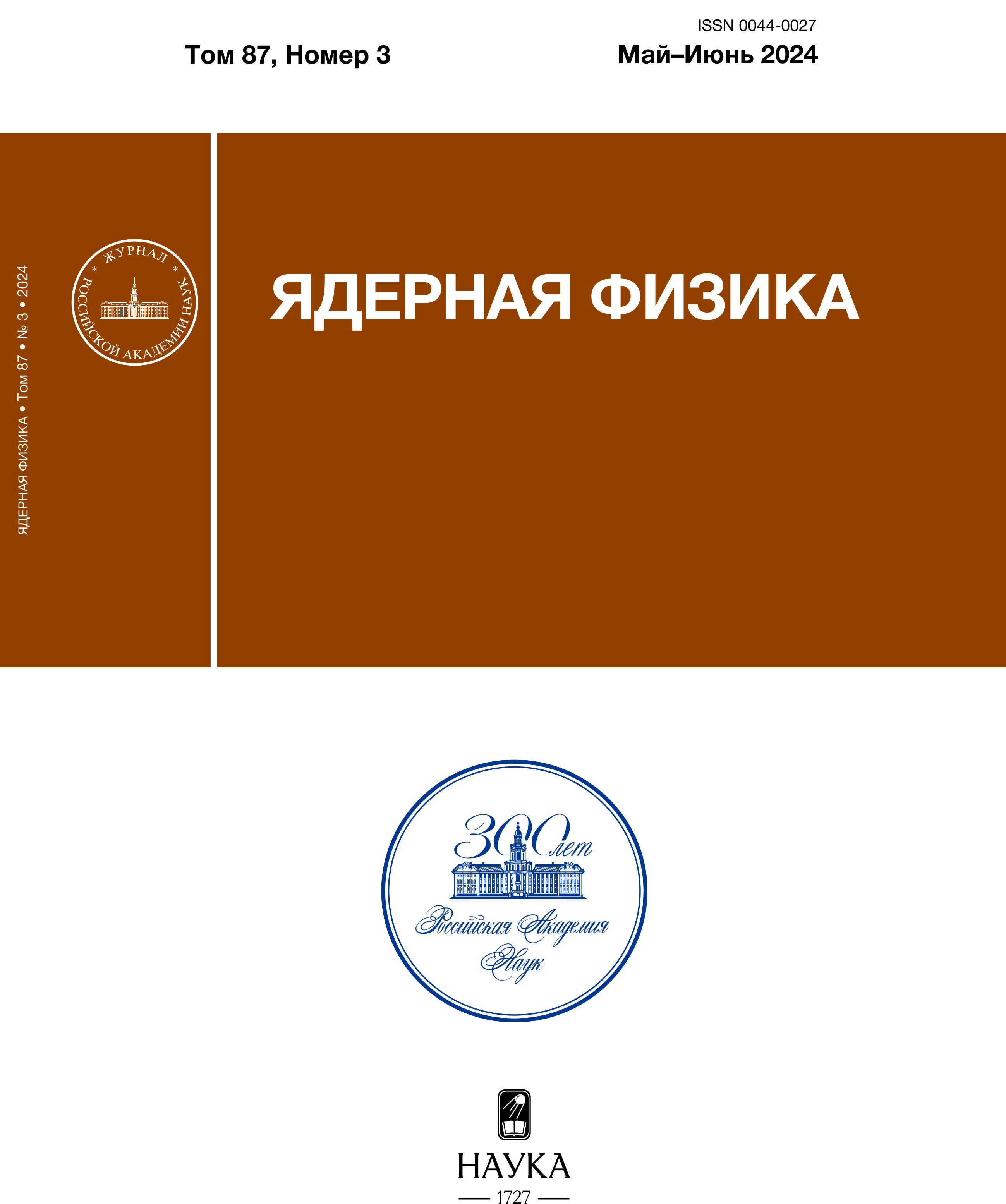THE POSSIBILITY OF DETECTING TeV ELECTRONS ANDPOSITRONS OF GALACTIC COSMIC RAYS USING THE EARTH’SMAGNETIC FIELD
- Autores: Stuzhin A.P.1, Mikhailov V.V.1
-
Afiliações:
- National Research Nuclear University MEPhI
- Edição: Volume 87, Nº 3 (2024)
- Páginas: 156-161
- Seção: ЭЛЕМЕНТАРНЫЕ ЧАСТИЦЫ И ПОЛЯ. Эксперимент
- ##submission.datePublished##: 15.06.2024
- URL: https://cardiosomatics.ru/0044-0027/article/view/674723
- DOI: https://doi.org/10.31857/S0044002724030047
- EDN: https://elibrary.ru/IWWXAB
- ID: 674723
Citar
Texto integral
Resumo
The research of the electron and positron spectrum of galactic cosmic rays is an important task of high-energy astrophysics. The necessity of using new methods of electron and positron registration is caused byinsufficient statistical reliability of data from modern experiments in the TeV energy range. In the presentwork, one of the possible registration methods based on the use of synchrotron radiation of electronsand positrons in the Earth’s magnetic field is investigated. Using modeling of trajectories of high-energyelectrons, positrons, and synchrotron photons emitted by them, the detector count rate for the ISS and ROS orbit has been estimated. The possibility of separation of electrons and positrons using this method isshown.
Sobre autores
A. Stuzhin
National Research Nuclear University MEPhI
Email: starwarriors2@mail.ru
Moscow, Russia
V. Mikhailov
National Research Nuclear University MEPhIMoscow, Russia
Bibliografia
- F. A. Aharonian, A. M. Atoyan, and H. J. Volk, Astron. Astrophys. 294, L41 (1995).
- Y. I. Stozhkov, Adv. Space Res. 70, 2727 (2022).
- I. V. Moskalenko and A. W. Strong, Astrophys. J. 493, 694 (1998).
- O. Adriani, G. C. Barbarino, G. A. Bazilevskaya, R. Bellotti, M. Boezio, E. A. Bogomolov, L. Bonechi, M. Bongi, V. Bonvicini, S. Bottai, A. Bruno, F. Cafagna, D. Campana, P. Carlson, M. Casolino, G. Castellini, et al., Nature 458, 607 (2009).
- M. Aguilar et al. (AMS Collab), Phys. Rev. Lett. 122, 101101 (2019).
- O. Adriani et al. (CALET Collab), Phys. Rev. Lett. 120, 261102 (2018).
- G. Ambrosi et al. (DAMPE Collab.), Nature 552, 63 (2017).
- S. Abdollahi et al. (The Fermi-LAT), Phys. Rev. D 95, 082007 (2017).
- D. Borla Tridon, P. Colin, L. Cossio, M. Doro, and V. Scalzotto, in Proceedings of the 32nd International Cosmic Ray Conference (ICRC2011), Beijing, Сhina, 2011, Vol. 6, p. 47.
- K. Egberts et al. for the H.E.S.S. Collab., Nucl. Instrum. Methods Phys. Res. A 630, 36 (2011).
- Zheng Xiong, Sha Wu, and Huihai He for the LHAASO Collab., in Proceedings of the 38th International Cosmic Ray Conference (ICRC2023), Nagoya, Japan, 2023, p. 315.
- Andrei Kounine on behalf of the AMS Collab., in Proceedings of the 38th International Cosmic Ray Conference (ICRC2023), Nagoya, Japan, 2023, p. 065.
- O. F. Prilutskii, JETP Lett. 16, 452 (1972).
- S. A. Stephens and V. K. Balasubrahmanya, J. Geophys. Res. 88, A10, 7811 (1983).
- A. P. Stuzhin and V. V. Mikhailov, Phys. At. Nucl. 86, 522 (2023).
- J. Tang, F. Kislat, and H. Krawczynski, Astropart. Phys. 128, 102563 (2021).
- G. R. Thomas and D. M. Willis, J. Phys. E: Sci. Instrum. 5, 260 (1972).
Arquivos suplementares










